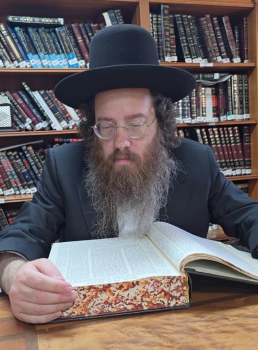Rules of kashruth for an esrog
Question
What are the basic rules of kashruth for an esrog (a citron, which is taken on Sukkoth as part of the commandment of taking the four species)?
Answer
Dear …!
These are some of the important details that you have to pay attention to when buying an esrog:
- That the esrog has not been crossbred with some other plant. Esrogs that don’t come from well-supervised plantations tend to be hybrids.
- That the esrog is not orlah. That is, it has not been plucked from a tree that was planted less than three years ago. Even in an old tree there could be a problem, though. If a new branch sprouts right out of the root of an old tree, this branch has a status of a new tree, and it’s going to be orlah for the first three years of its growth.
- That the esrog is not deficient. That means that no part of its pulp has been cut off. If a piece of its thin outside rind has been peeled off, the esrog is still kosher. You need some expertise to know if only the rind has been peeled off, or if a piece of pulp is also missing.
- That the esrog hasn’t changed color. If there are spots of unusual color on the esrog, such as white or black spots, then the esrog could be invalid. The rules are as follows:
- In the upper third of the esrog, if there is even one spot of abnormal color, the esrog is invalid.
- In the lower two thirds of the esrog, the unusual color will not make it invalid, unless it covers most of its circumference or most of its height. That is, even if there is a band of abnormal color, and the band is not of large area, but it’s long enough to circumscribe most of the esrog widthwise or height wise, the esrog is invalid.
- If in the lower two thirds of the esrog there are three or more spots of unusual color, and together they encompass the whole esrog, this is considered as if there were a change in color in the majority of the circumference of the esrog, and the esrog is invalid. Also, if there are two spots on two opposite sides of the esrog, in a way, that a change in color is visible from any angle, this is also considered a change in color in the majority of the circumference of the esrog, and the esrog is invalid.
- The esrog may have some “bletlech”. This means that there are somewhat rough light brown spots on the surface of the esrog. These occur because the esrog comes in contact with leaves and other objects while growing. According to the letter of the law, if these spots are flat and do not protrude upwards from the surface of the esrog, they are absolutely kosher. But they can make an esrog less beautiful for the performance of the commandment (which would also make it less expensive).
- That the esrog has its “sting”, which is the stem that connected it to the branch. If it fell off, the esrog is invalid. But if even a small piece of it is still remains connected to the esrog, the esrog is kosher.
- If an esrog grew with a pitam (a part that was left after the flower withered), and then the pitam fell off, the esrog is invalid. But if the pitam fell off naturally while the esrog was still growing, then the esrog is kosher.
- Minimum size of a kosher esrog is “the size of an egg”, which, according to different opinions, is 100 to 150 ml.
- If the esrog is of deep green color, it’s invalid. But if it began to show some yellowish hue, it’s kosher.
These laws are applicable to the esrogs that reach the market. There are some other laws that aren’t so relevant today, since there is such an abundance of kosher esrogs. These types of invalid esrogs never reach the market at all: esrog that cracked along its whole length, esrog whose most outside rind has been removed, esrog that has been pierced all the way through, a dried esrog, and some others.
Source
Shulchan Oruch, section Orach Chaim, chapter 648
Comments
Have an additional question on this topic or need clarification? Leave your comment below. (Please note that the comment will not be published but will be sent directly to the answering Rabbi for review and a private response)
